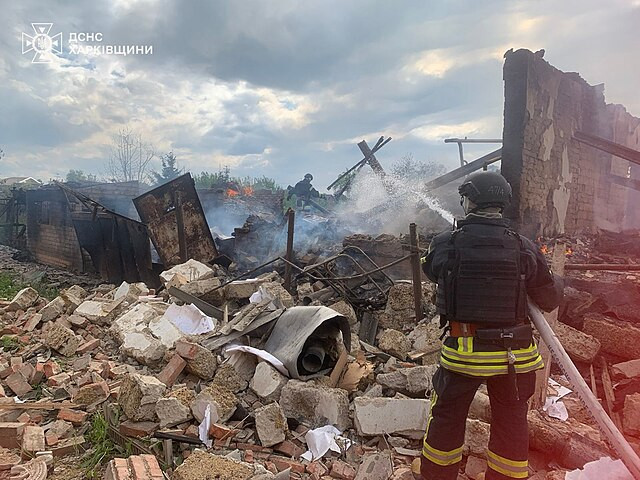Ukraine's top military official has acknowledged that the situation in the northern Kharkiv region has "significantly worsened" following Russia's claim of capturing four additional villages in its expanded surprise cross-border offensive. While a Ukrainian regional official insisted that Russia's progress was not yet "significant," he admitted that ground fighting in the area was spreading, as UK Foreign Secretary David Cameron described the situation as an "extremely dangerous moment," effectively stating that Russia had "invaded [Ukraine] again."
The precise goal of Russia's new push, which began in the early hours of Friday morning, remains unclear. Speculations range from creating a buffer zone to reduce Ukrainian attacks on Russian territory, to a potential renewed assault on the city of Kharkiv, located 30 kilometers (18 miles) to the south. Ukrainian President Volodymyr Zelensky, in his Sunday evening address, suggested that the attacks in the Kharkiv region were aimed at stretching Ukrainian forces and undermining the morale and motivation of Ukrainians to defend themselves.
According to information from the Russian Defense Ministry, Moscow now claims control over nine Ukrainian border villages, clustered in two areas just a few dozen kilometers apart, northeast of Kharkiv city. A Ukrainian military blogger, Myroshnykov, reported on Sunday afternoon that Russian troops had pushed south and entered the town of Vovchansk, although the pace of advance had slowed due to Ukraine's defending forces. Myroshnykov predicted that Russia would attempt to leverage its numerical advantage by sending large numbers of infantry soldiers into battle, a tactic that has reportedly resulted in many Russian casualties in previous offensives.
Oleh Syniehubov, a regional Ukrainian leader, provided insight into the destruction being inflicted on Vovchansk and surrounding villages, stating that Russia had dropped more than 20 huge glide bombs on the area in less than two days. These bombs, weighing between 250 and 1,500 kilograms, are among the most destructive mass-produced devices currently used by Russia in the war and have previously been used as a precursor to major attempts to seize ground.
Ukraine's army chief, Oleksandr Syrskyi, informed his social media followers on Sunday that defensive operations were ongoing and that battlefield conditions were difficult. "This week, the situation in Kharkiv Oblast has significantly worsened. Currently, there are ongoing battles in the border areas along the state border with the Russian Federation," he wrote on Telegram.
While Syniehubov insisted that control over the border villages was still contested rather than ceded, the influential DeepStateMap group, a Ukrainian organization monitoring developments on the battlefield, showed seven Ukrainian villages under either full or partial Russian control. At present, Russian gains are not sufficient to put its artillery within range of Kharkiv city, but residents admit the situation is frightening.
Evacuation teams have been working non-stop to take residents, primarily the elderly, out of harm's way. At least 4,000 civilians have fled the Kharkiv region since Friday, according to Governor Syniehubov. Heavy fighting raged on Sunday along the northeast front line, where Russian forces attacked 27 settlements in 24 hours.
Analysts suggest that the Russian push is designed to exploit ammunition shortages before promised Western supplies can reach the front lines. Ukrainian soldiers report that the Kremlin is employing its usual tactic of launching a disproportionate amount of fire and infantry assaults to exhaust their troops and firepower.
By intensifying battles in what was previously a static patch of the front line, Russian forces threaten to pin Ukrainian forces in the northeast while simultaneously carrying out intense battles further south, where Moscow is also gaining ground. The advance comes after Russia stepped up attacks in March, targeting energy infrastructure and settlements, which analysts predicted was a concerted effort to shape conditions for an offensive.






